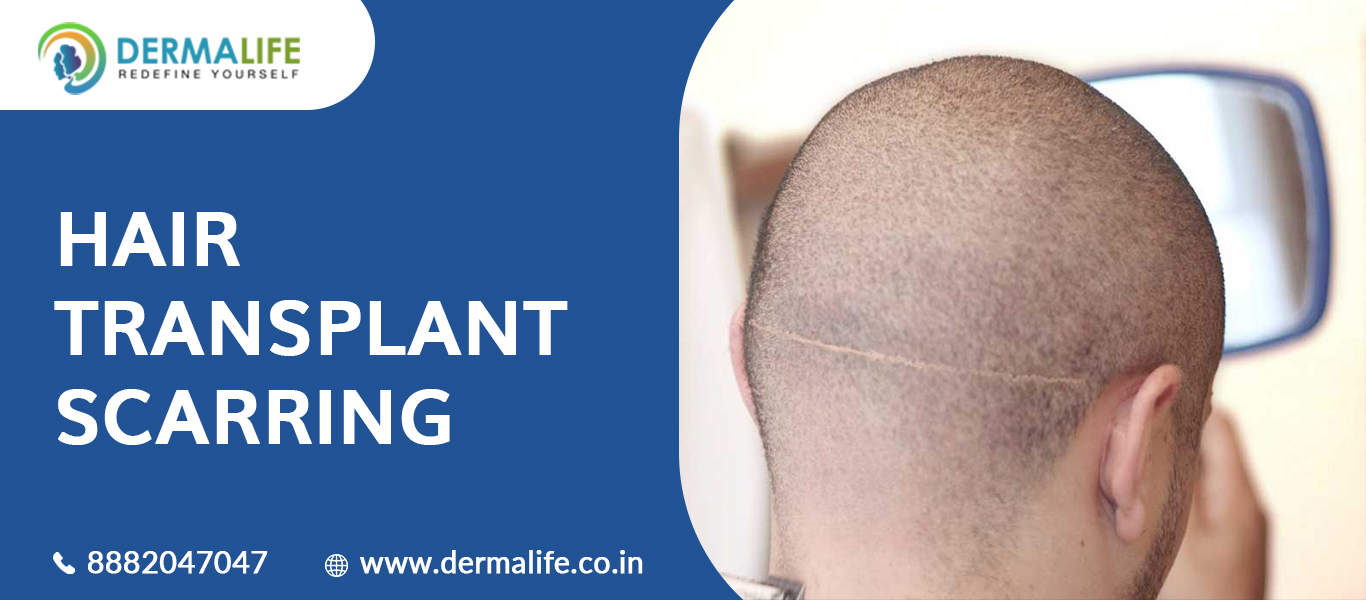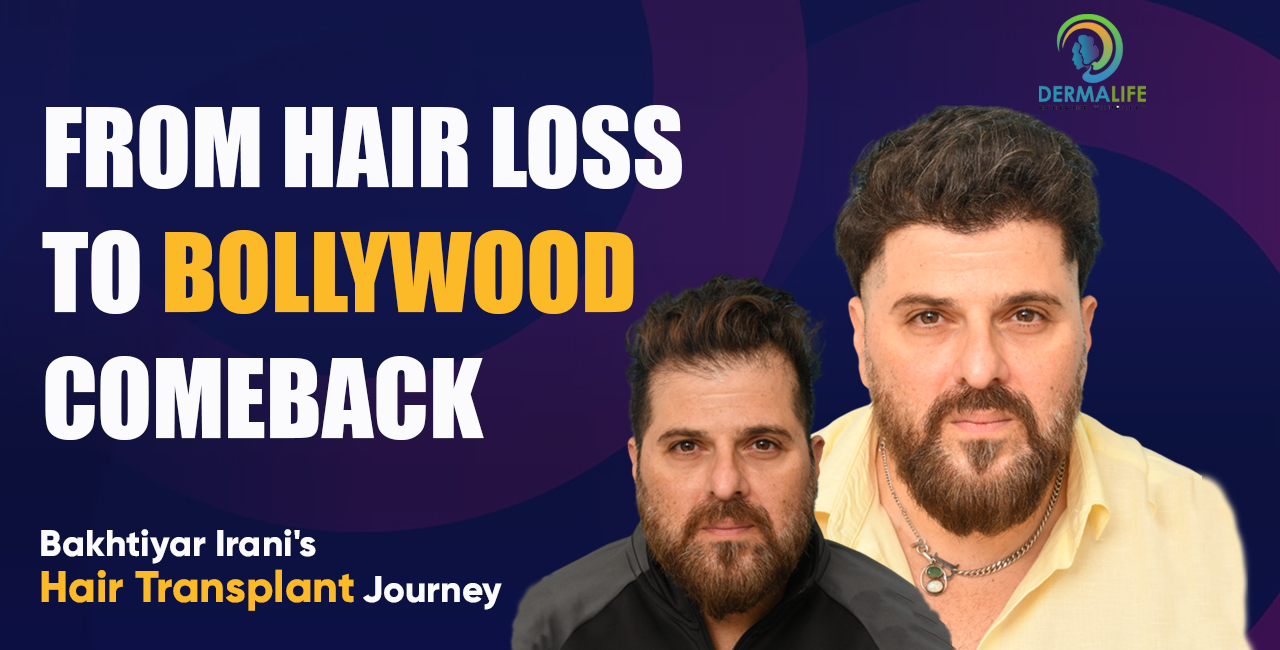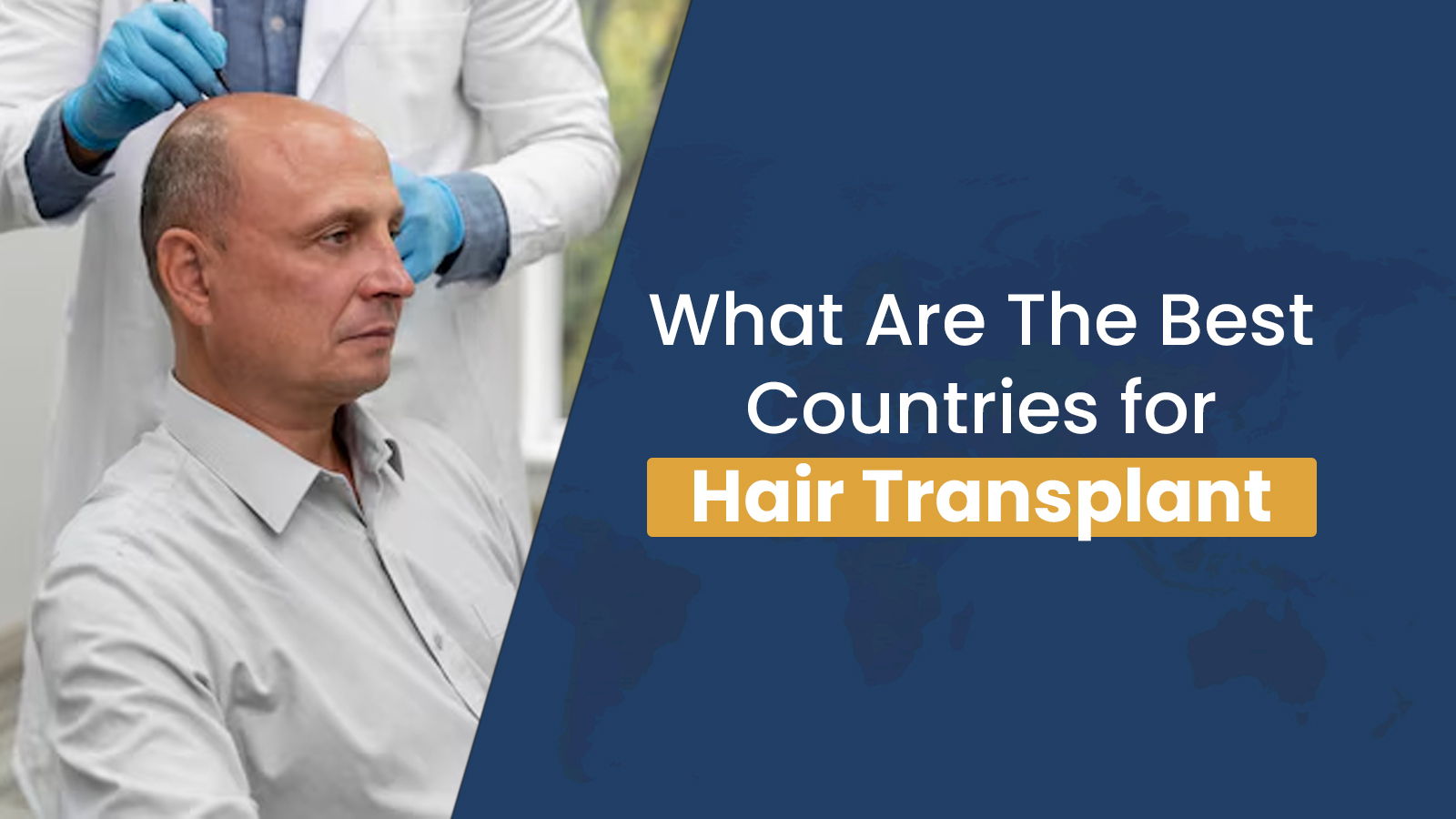Hair loss and baldness have become common problems affecting both men and women across the globe. On average, we all lose anywhere between 50 to 100 hairs every day. Our body can replace the lost hair with new hair. Here you get to know about the hair transplant success rate in India.
However, the issue gets aggravated when we start losing more hair than the new ones or when the growth of new hair is inhibited due to multiple factors such as medical illness, chemotherapy, stress, pollution, tinea capitis (fungal infection of the scalp), side effects of drugs, and health conditions such as Telogen effluvium, Alopecia areata, Hereditary pattern baldness, or Traumatic alopecia.
How is a successful hair transplant performed?
Today, Follicular unit extraction (FUE) is the most trusted and popular method of hair restoration. This procedure involves the following steps:
- The patient visits the clinic for a hair transplant and the surgeon performs a comprehensive evaluation of the patient’s scalp. Some diagnostic tests may be recommended by the surgeon before surgery is recommended. During the initial consultation, the surgeon will answer all questions in the mind of the patient so that he or she gets a complete understanding of the entire procedure, the pros and cons, what would be the realistic expectations and tips and precautions to follow before, during, and after the hair transplant surgery.
- Medical photographs of the patient’s scalp are captured for documentation and post-operative analysis.
- The surgeon then makes markings on the donor and recipient areas (hairline will be drawn for the frontal baldness and will be shown to the patient for approval) and the donor area may be totally or partially shaved.
- Local anesthesia is administered to the patient after preparing the donor area.
- Hair extraction is initiated to transfer hairs from the donor areas to the recipient areas, using millimetric surgical instruments known as “punches”.
- The follicular units are extracted from the patient’s scalp after being separated with the punches using extremely fine forceps.
- The number of follicular units is multiplied by the count of hairs present in the follicular units to get the exact count of hairs to be transplanted.
- The follicular units are placed in a custom solution immediately after their extraction to ensure their vitality and survival rate. They are kept under hydration and at the ideal temperature until the moment of hair implantation.
- The surgeon’s team starts preparations under the magnification of the stereoscopic microscope.
- Thereafter, the surgeon starts making incisions with custom-made instruments having a thickness of less than 1 mm. The incision depth is the same as the follicular length.
- The surgeon and his team start with the implantation of the follicular units one by one in the recipient zone while considering the angle, direction, and density distribution patterns of the existing hair.
- Thereafter, the donor and recipient areas are washed using a special solution.
- The surgeon’s team will perform the final initiatives before the patient is asked to recover and heal for a while.
- Some antibiotics, anti-inflammatory drugs, and painkiller medications may be prescribed to the patient.
- Continuous monitoring of the patient’s health is performed throughout and after the surgery.
What factors affect the hair transplant and the survival and growth of Follicular Grafts?
The important factors that affect hair transplant procedures include:
- Choosing a good surgeon: There is no denying the fact that paying attention to selecting the best hair transplant surgeon who is accredited with an exceptional success rate in India plays an all-important role in deciding the results of the hair transplant. During a hair transplant procedure, the expertise and skills of the hair transplant surgeon play vital roles in enhancing the outcomes. This is primarily because the surgeon will plan the entire surgery (the direction of hair follicles, the number of hair grafts required, the angle and density of the hair follicles, the orientation of hair follicles, etc.). Furthermore, the surgeon will have all the answers on how to hide the baldness, restore the lost hair, and revitalize the appearance of the patient’s hair.
- Choosing the right hair transplant technique: Selecting the right hair transplant procedure according to the specific requirements of a patient suffering from severe hair loss or baldness is also an important factor. For instance, Follicular unit extraction (FUE) procedures are ideal for men and women who want to make a quick and safe return to normal activities after the successful performance of the hair transplant. FUE is also an excellent choice for people who want to avoid the linear scar associated with hair transplant procedures such as Follicular Unit Transplantation (FUT).
- The degree of baldness: The complete success of hair transplant surgeries is dependent on the extent and severity of severe hair loss or baldness. Patients can explore Norwood Classification to check out their level of baldness and how many hair grafts will be required to have a covered head full of hairs.
- Count of required grafts: Each hair graft comes for a price and a high level of baldness would mean an increased number of hair grafts and a higher surgery price. The count of hair grafts required depends on factors such as the extent of baldness, availability of donor’s hair, density characteristics of donor’s hair, and graft survival rate.
- The number of sessions required: Generally, most hair transplant surgeries are performed in a single session of approximately 6 – 8 hours. In some instances where patients have a bigger area of baldness, surgeons may perform hair transplant procedures in multiple sessions.
- Location of the FUE hair transplant clinic: The location of the FUE hair transplant clinic may also be a deciding factor in the success rate of the hair transplant surgical procedure. Clinics in some parts of the country may charge differently based on their infrastructure, the reputation of medical staff, the success rate of the FUE hair transplant clinic, etc.
- The Reputation of the FUE hair transplant clinic: The reputation of the FUE hair transplant clinic also plays an important role in deciding the graft survival rate and the success rate of your hair transplant surgery. Successful clinics with impeccable reputations may charge slightly more than other clinics so that they can maintain the highest standards of safe, innovative, and hassle-free surgeries.
- The expertise and qualifications of the surgeon: You should always prefer a hair transplant surgeon who has rich experience and is qualified to handle simple as well as complicated hair transplant surgeries. For this, you may visit social media platforms and medical channels having reviews, feedback, testimonials, etc. about the surgeon and his/her area of work and specializations.
The factors that affect the survival and growth of follicular graft include:
- Donor scalp issues
- Operation day factors that include transaction, ischemia-reperfusion injury (IRI), physical damage to the grafts-dehydration, blunt trauma, and storage solutions
Let us discuss all these factors to gain a clear and complete understanding.
- Donor Scalp Issues: Hair follicles exist in the human scalp singly in a group of 2-5 follicles (follicular units). There is miniaturization or disappearance of individual follicles with androgenetic alopecia. In other words, the count of follicles and follicular units starts reducing with time. The follicular units in the optimal donor area of the parietal and occipital scalp are “relatively” safeguarded against androgenetic hair loss. Therefore, the evaluation of a patient’s scalp is an important step before hair transplant surgery.
- Ischemia-reperfusion injury: Hair tissue gets separated from its blood supply during the process of hair transplantation and develops ischemia. In hypoxic conditions, Adenosine triphosphate (ATP) is broken down and a buildup of xanthine and hypoxanthine in the cells is initiated. This sudden conversion further creates reactive oxygen species and free radicals to overwhelm the antioxidant defense of the body to initiate a cascade, often resulting in aponeurosis. A hair transplant surgeon can induce less shedding and better growth of hair by adding a series of antioxidants to hold the solutions during the transplant procedure.
- Dehydration, blunt trauma, and transaction: Several studies have documented the loss of hair grafts to dehydration, but survival time in a dry environment may be a bit variable before significant graft death happens. An experienced and qualified FUE hair transplant surgeon ensures minimal loss of hair grafts and trauma to the bulge zone to safeguard hair grafts from damage.
- Storage solutions: A series of considerations (osmolality, pH, ionic concentrations, and addictive substances) are required for storage solutions. Storage solution additives such as mannitol, insulin, adenosine triphosphate, allopurinol, nitric oxide inhibitors, amino acids, arachidonic acid inhibitors, and vitamins demonstrate positive effects on enhancing the survival and growth of hair grafts.
Graft survival is also influenced by other factors such as graft size, the method of preparation, density and depth of sites, the count of intact and non-intact grafts, lateral (coronal), and parallel (sagittal) grafts, etc.
What is the success rate of hair transplants in India?
Are you looking for an answer to the common question, “What is the success rate of hair transplant in India?” The success rate of hair transplants in India is approximately 95-98 percent and the survival rate of FUE hair transplant procedures in India is approximately 94-96 percent. It is important for you to always remember the differences between the hair transplant success rate and the hair transplant survival rate.
Hair transplant success rate may be a confusing way to explain the quality and intricacies that go behind a hair transplant procedure because of a lack of a clear and concise measurement. It is always a better choice to check the hair transplant survival rate which can be defined as the count of transplanted hair follicles that result in permanent hair growth over time. Some of the most important factors that contribute to the survival rate of hair follicles are how hair follicles are treated and how hair follicles are implanted.
Let us understand this with the help of an example. Assuming that there are two hair transplant clinics (clinic A and clinic B) that claim to offer the best hair transplant success rate in India. Let us now say that you need 3,000 hairs to correct a receding hairline. The success rate of both clinics is 95 percent and the survival rate of clinic A is 90 percent and 94 percent for clinic B. This means that you will get more value out of your hard-earned money by choosing clinic B. This is exactly where a reputed and successful hair transplant clinic like Dermalife steps in.
Considered to be the best hair transplant clinic in Delhi NCR, Dermalife has a team of the finest, most experienced, and highly reputed hair transplant surgeons, nurses, and other medical professionals. This leading hair transplant and skincare clinic offers the hair transplant success rate in India so that patients who are suffering from severe hair loss or baldness can get respite within no time. The best things about the FUE hair transplant procedures offered are complete confidentiality, affordability, exceptionally high hair transplant success rate, compassionate care, and exemplary pre-and post-operative treatment.
How to get the most out of Hair Transplant Surgery?
You should follow certain tips and precautions to get the most out of your FUE hair transplant surgery:
- Please strictly follow the before, during, and after-surgery instructions, tips, and precautions communicated by the surgeon or the surgeon’s team.
- You should avoid nicotine and alcohol. Furthermore, you should lead an active lifestyle and engage yourself in rigorous exercises for about 30-45 minutes every day after 2 – 3 weeks of surgery.
- Your surgeon may recommend Minoxidil and Finasteride for a while.
- You should never self-prescribe medications.
- Try your best to stay away from stress, depression, loneliness, and anxiety. They are not good for your general and overall health.
- Avoid hot baths, saunas, and steam rooms.
- Use only natural and clinically-approved hair care products.
- You should visit the surgeon’s office for regular consultations.
Takeaway
If you or a loved one is suffering from severe hair loss or baldness, you can reach out to Dermalife, the best FUE hair transplant clinic in Delhi NCR, to access the best hair transplant success rate in India.
If you have always wanted to find an answer to a common question, “What is the success rate of hair transplant in India“, you can trust Dermalife without second thoughts as the FUE hair transplant clinic offers the highest graft survival rate and the best hair transplant success rate in India. Don’t feel sad every day while looking in the mirror, make the life-changing decision now. Call Dermalife and reclaim your lost hairline now!
FAQ
Post-operative care after hair transplant typically includes following the surgeon's instructions regarding wound care, medications, and lifestyle restrictions. It's essential to keep a healthy lifestyle, stay away from vigorous activities, and shield the transplanted area from too much sun exposure.
Comply with the medication regimen advised by your surgeon in order to minimise discomfort and avoid infection. Cleaning the transplanted region gently in the manner prescribed by your surgeon for the first few days following transplantation, refraining from touching, scratching, or rubbing the transplanted area in order to prevent stress to the recently transplanted grafts are some other ways. Shield the transplanted area from the sun's rays to prevent any graft deterioration. Refrain from heavy lifting and physically demanding activities. Keep up a nutritious diet that provides enough protein, vitamins, and minerals to assist hair growth and recovery. Keep your planned follow-up meetings with your surgeon to discuss any questions or concerns and to get an update on your condition.Regarding the time frame for results, exercise patience and realism.
Since the transplanted hair is typically resistant to the effects of hair loss, the success of a hair transplant is typically regarded as permanent. However, factors like continued hair loss in other regions and normal ageing may have an impact on the long-term outcome.
In terms of the fact that it resists male pattern baldness, the hair transplanted from a donor is usually permanent. Individual experiences could differ, though, and ageing naturally can still have an impact on how your hair looks.
The price of the treatment, the method selected, and the extent of experience of the surgeon can all affect the cost of a hair transplant in India. A lot of clinics provide financing choices to patients to help with financial planning.
The total cost is determined by the quantity of grafts required to produce the intended outcomes. The amount depends on a number of variables, including the patient's objectives, the size of the treatment region, and the degree of hair loss.
India is renowned for its highly qualified and experienced hair transplant surgeons, with success rates frequently matching or exceeding those of many other nations. Due to its affordable costs and superior outcomes, hair transplant surgery in India is extremely popular among patients from other countries.
India has become known for its highly qualified and experienced hair transplant surgeons, affordable healthcare, and first-rate medical facilities. Due to the combination of cost-effectiveness and skill, many overseas patients fly to India for hair transplant surgeries.
When considering a hair transplant in India, patients should make sure they receive a comprehensive consultation, choose a reputable and competent surgeon or facility, and are well aware of the potential outcomes and restrictions of the process. The effectiveness of a hair transplant ultimately depends more on the surgeon's ability, the unique characteristics of the patient, and the post-operative care given than on the location of the treatment.
Indeed, a number of factors can affect the outcome of a hair transplant, including the experience of the surgeon, the patient's age, the quality of the donor hair, general health, and compliance with post-operative care instructions.
The outcome of a hair transplant is largely dependent on the training, experience, and competence of the physician conducting the surgery. The selected hair transplant method (FUT or FUE) and the surgeon's skill level in executing it can have an impact on the success rate.







No Comment! Be the first one.